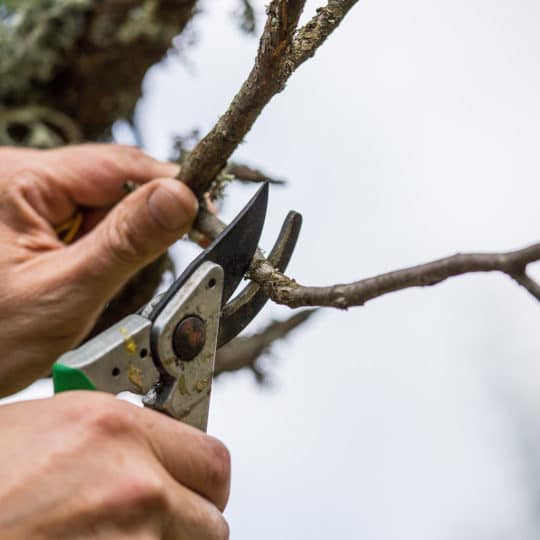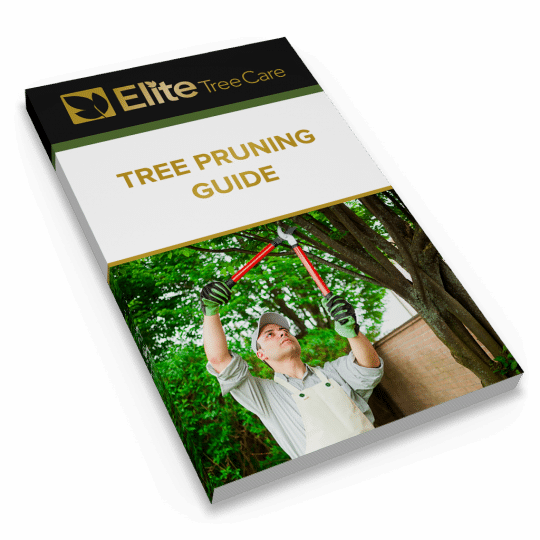What’s the Best and Worst Time for Tree Pruning?
Well, it Depends on the Tree
Posted
August 8, 2024

Like many lawn and garden tasks, there’s a best and worst time for tree pruning. Not doing it right—or at all—can negatively impact healthy growth. Learn what factors effect when you should or shouldn’t prune as well as the proper technique for optimal results.
Best Time for Tree Pruning
Pruning your tree at the right time not only helps improve plant health, but it can also prevent your tree from becoming a health hazard. Even though cutting a tree branch creates a wound in the tree, there are certain times of year when it can heal quickly. However, there are also times when pruning cuts put more stress on the tree and can cause more harm than good.
So, when should you cut? If you can wait until late winter, this is the best time to prune. Why?
- Most trees have lost their leaves, making it easier to see the branches that need cutting.
- Trees go dormant during this season, so they won’t get stressed trying to focus on growing and healing fresh cut wounds at the same time.
- Pruning in the late winter prepares the plant for the upcoming growing season in early spring.
- Surrounding plants and grass are also dormant, so there’s less chance of disturbing your lawn and garden with falling branches while pruning.
There’s always an exception to the rule. You don’t have to wait until winter if you notice dead, diseased, or broken tree branches. These should get pruned right away to help prevent the spread of disease or having these branches fall on their own.
Proper Pruning Techniques
When you do decide to prune, how you go about the process also makes a difference.
- Prune on a dry, mild day. There’s no point pruning while it’s raining or snowing. Plus, you’ll prevent waterborne diseases, drying out the branches, and damage from extreme temperatures.
- Prune the dead and diseased branches first. Make sure to clean the pruning tools if it touches any diseased bark.
- Prune the lower branches on evergreen shrubs and trees to keep them off the ground.
- Remove smaller, crisscrossing, or overgrown branches to help increase the light and air at the crown of the tree.
- Cut branches at the node: the point at which the branches attach to one another. Cutting from the top down is known as tree topping is is not recommended.
You want to keep any branches that help maintain the structure of the tree. Remember that you shouldn’t remove more than 30% of the branches throughout the entire tree. If you start to prune too much, your tree can go into the shock when it tries to heal all the wounds and grow back.
Worst Time for Tree Pruning
Whether you accidently cut a healthy limb or you decide to prune at the wrong time, you can easily weaken your tree and make it more vulnerable to disease and pests. So what’s the wrong time?
- During extreme heat or cold. Your tree is already stressed at this time, so making a cut can put it under more pressure and make it susceptible to disease, drought, or drying out.
- Pruning before the tree blooms not only removes the beautiful flowers, but it forces the tree to use stored energy to replace these buds.
- Removing branches at peak foliage takes away beneficial nutrients. These leaves absorb energy and nourishment from the sun through photosynthesis.
It’s not easy to fix a poor pruning job. While some stronger trees can grow back, they may not grow back strong. If you’re still unsure whether or not now is the right time for pruning, it’s best to consult a tree care specialist for guidance.
Pruning by Tree Type
In addition to time of year, the best time for pruning also depends on the type of tree you have. Some homeowners may not know exactly what trees line their yard, but there are easy ways to tell.
- Deciduous trees are the ones that drop their leaves in fall. Once all the leaves are gone and it enters dormant season in the winter, you can easily see the structure of the tree and decide which branches need to go.
- Young trees are still developing a strong structure, so proper pruning is essential. Trees that get the right amount of pruning and shaping while they’re young often need less trimming as they grow older. Consult a professional for the best methods of maintaining optimal tree structure.
- Prune flowering trees once the blooms die off. This varies depending on whether the plant develops new blooms on old or new wood and whether they bloom in the spring, summer, or fall.
There are some trees that are more prone to certain diseases and attract specific pests. Improper pruning can increase the chances of these trees falling victim to health issues. Take extra care to help ensure these trees get the attention they need before, during, and after pruning to prevent problems.
Professional Tree Care
One of the best ways to ensure your specific tree gets the specialized care it needs is to have a qualified arborist inspect and prune, no matter the season. Pros understand the different tree types, conditions, and pruning processes to get the job done safely, efficiently, and effectively any time of the year. Contact Elite Tree Care to evaluate your tree and discuss options for proper tree pruning.

Download Your FREE Tree Pruning Guide
Learn how, when, and how much to trim or prune your trees to maximize their health and beauty. This guide covers the factors that go into tree trimming (pruning) and will help you make a more informed decision about hiring a professional tree service.